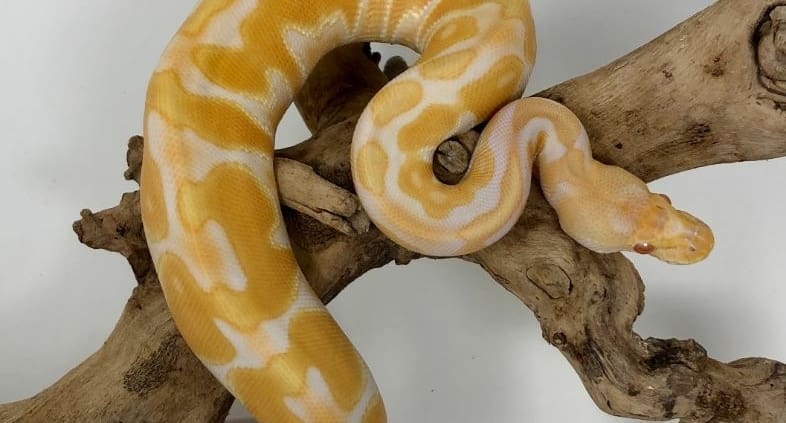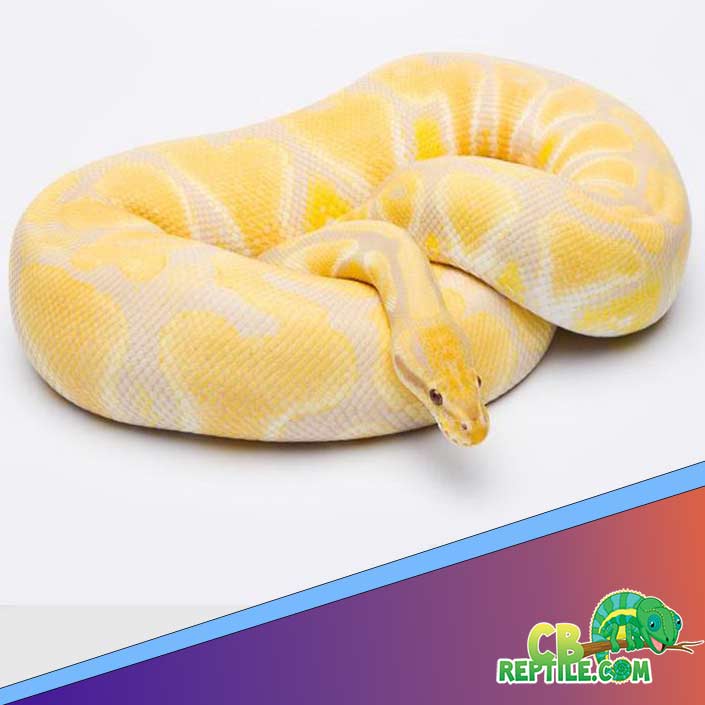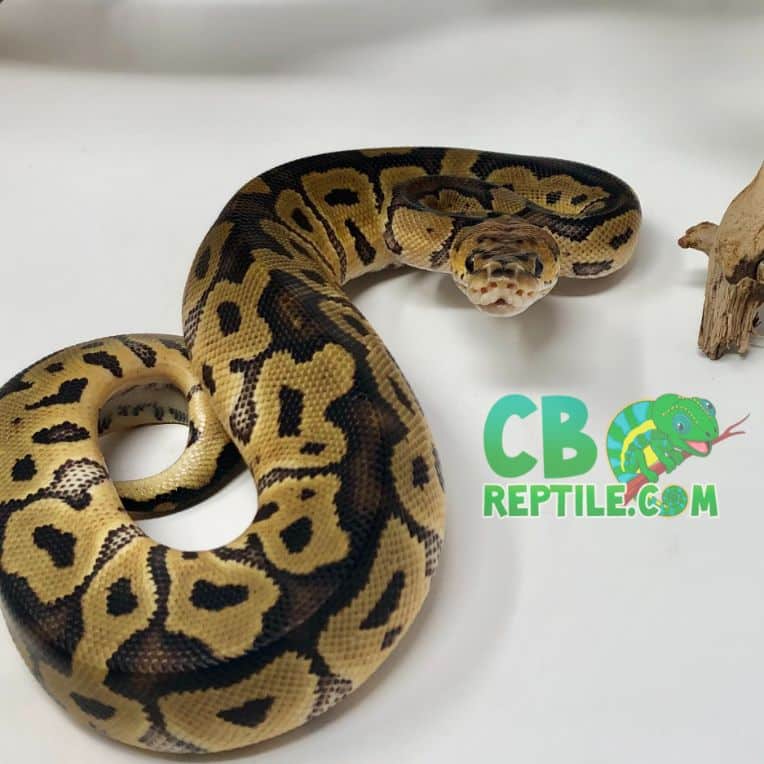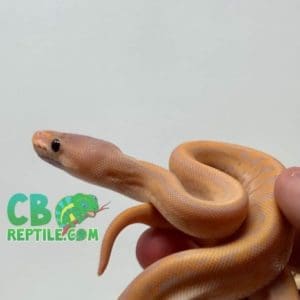
Setting Up the Perfect Ball Python Habitat: A Happy Keeper’s Guide

Why the Habitat Matters
A ball python’s health and happiness are directly linked to its environment. Improper setups can cause stress, feeding issues, or health problems. A secure, well-heated, and enriched enclosure helps your python feel safe, eat consistently, and display natural behaviors.
Choosing the Right Enclosure
Size by Age
- Hatchlings: 10–20 gallon tank
- Juveniles: 20–40 gallon tank
- Adults: 40+ gallon tank or larger enclosure
Secure Lids
Ball pythons are escape artists. Always use a secure lid or enclosure with locking mechanisms. A strong, escape-proof habitat ensures your pet’s safety and your peace of mind.
Substrate & Décor

Substrate choice affects humidity, cleanliness, and comfort. Popular options include:
- Aspen shavings: Easy to clean and affordable, though it doesn’t hold humidity well.
- Cypress mulch: Great for holding moisture and maintaining humidity.
- Paper-based bedding: Excellent for cleanliness and monitoring waste.
Add at least two hides—one on the warm side and one on the cool side. Ball pythons need safe hiding places to feel secure. Branches, cork bark, and artificial plants provide enrichment and opportunities for exploration.
Ball python habitat Temperature Gradient

Ball pythons rely on external heat sources to regulate their body temperature. A proper gradient is crucial:
- Warm side: 88–92°F basking spot for digestion.
- Cool side: 75–80°F ambient temperature.
- Night: No lower than 72°F.
Humidity & Shedding
Maintaining humidity is just as important as temperature. Keep levels around 50–60% for normal conditions and increase to 65–70% during shedding cycles. Providing a humid hide filled with damp moss helps ensure clean, full sheds.
Lighting
Ball pythons do not require UVB, but maintaining a consistent day/night cycle (12 hours light, 12 hours dark) supports healthy behavior. Simple ambient lighting or a light on a timer works well.
Feeding & Habitat Interaction
Feeding success is often tied to habitat comfort. A python that feels secure in its enclosure is more likely to accept meals regularly. Offer frozen/thawed prey, warmed to body temperature, using feeding tongs. Avoid handling your snake for at least 48 hours after feeding to prevent regurgitation.
Handling in the Habitat
When handling your ball python, always approach calmly and support its body fully. Avoid pulling it from hides abruptly; instead, gently encourage it out. Regular handling in a secure environment helps build trust and confidence.
Raising a Baby Ball Python
Young ball pythons may be shy at first, but with a properly set up habitat, they quickly adapt. A secure enclosure with correct temperatures, humidity, and hides sets them up for success. When you purchase a baby ball python for sale from CBReptile.com, you can rest assured your pet is healthy, parasite-free, and already feeding reliably.
Why Buy From Real Breeders Like CBReptile.com?
The success of your habitat setup and your snake’s overall well-being starts with choosing the right breeder. Pet store snakes often come from large-scale suppliers with unknown health histories, leading to stress or feeding issues. By contrast, CBReptile.com provides captive-bred, well-started snakes raised with proper care.
CBReptile.com is family-run and has been breeding ball pythons for over a decade. They emphasize genetics, health, and ongoing customer support, making them the most trusted source for new and experienced keepers alike.
Daily & Weekly Care Checklist
- Daily: Check temperatures, humidity, and water levels.
- Weekly: Feed according to age, clean waste, and monitor shedding progress.
- Monthly: Deep-clean the enclosure and rotate enrichment décor.
Happy Keeper’s Habitat Checklist
- Secure, escape-proof enclosure sized appropriately for your snake’s age.
- Two hides: one on the warm side, one on the cool side.
- Substrate that supports humidity, like cypress mulch.
- Temperature gradient: 88–92°F warm side, 75–80°F cool side.
- Humidity 50–60%, with humid hide for sheds.
- Frozen/thawed prey offered with feeding tongs.
- Captive-bred ball python from CBReptile.com for the best start.
